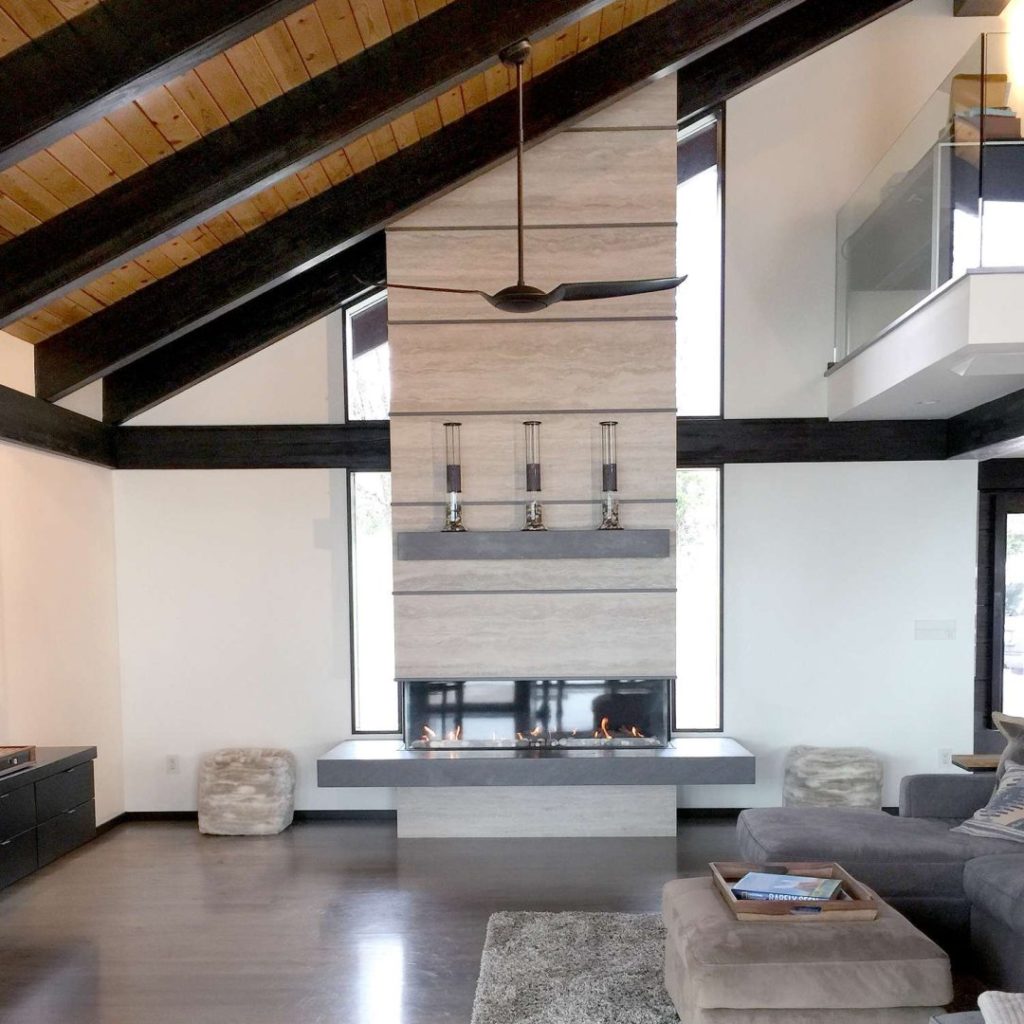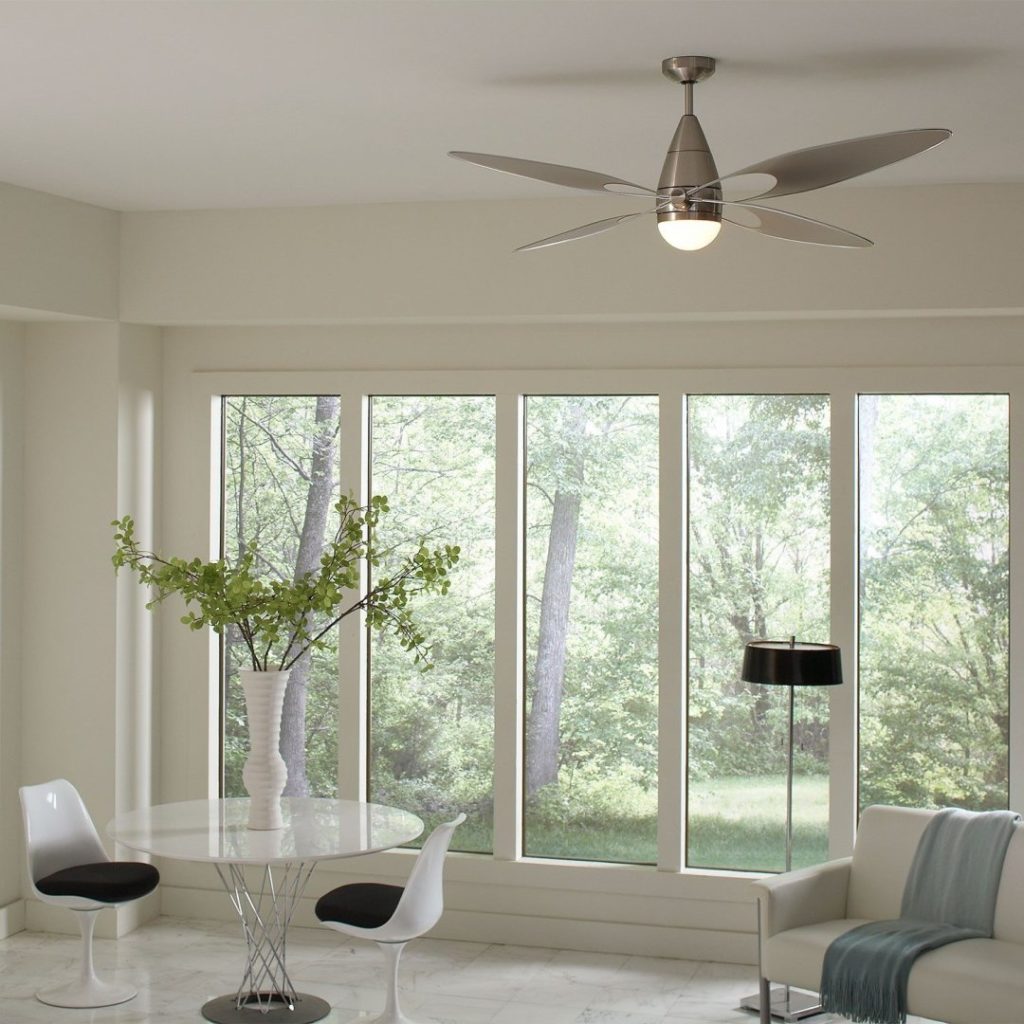How To Choose A Ceiling Fan – Size, Blades & Airflow
With so many variables and options, choosing the perfect ceiling fan and picking the right size can be a bit daunting. We’ve compiled some expert advice that will guide you through choosing a ceiling fan fit for your needs
Determining what type of ceiling fan you should add to your room of choice can seem like a surprisingly complex decision when you are first starting out. You need to consider the dimensions of your room, the size of the fan, airflow and CFM, the length of its blades, how many blades, their materials, and more
How do I choose a ceiling fan size that fits my room?
The first thing to consider when deciding your ceiling fan size is the size of the room in which it will go. The square footage of a room dictates how big the ceiling fan will need to be because a fan that is too small or big for a space will not circulate the air properly.
How do I determine the hanging height of the fan?
To meet building codes, the bottom of the fan should be at least seven feet off the floor; eight to nine feet will allow for optimal circulation. For higher ceilings, you can use fans with downrods, such as the Ball Ceiling Fan, to achieve the right height. The more space between the ceiling and the blades, the better for air flow and circulation. Ideally, aim for at least 12 inches
Can I install a ceiling fan if I have a sloped ceiling?
Aside from hugger fans, most fan canopies (the part that attaches to the ceiling and covers the junction box) can accommodate some degree of slope-usually up to 30 degrees. An additional longer downrod may need to be purchased to ensure enough blade clearance. For steeper slopes–or in cases where sloped ceiling installation is explicitly not allowed–manufacturers offer sloped-ceiling adaptors, often called angle mounts.

How to Choose the Right Ceiling Fan
Selecting the right ceiling fan isn’t just about choosing the right color and style. There are some key factors that you must consider your decision in order to get the maximum efficiency and enjoyment from your fan.
Decide where you want to install the fan. Most fans are placed in the center of the room, allowing smooth air flow throughout the room. However, larger rooms may be better suited for 2 fans for optimal air flow. For safety reasons, do not install a fan over a bed
Think about electricity. Since fans require the same amount of power as most ceiling fixtures, the electrical circuit shouldn’t be overloaded
Choose a good quality fan. A cheap fan is more trouble than it is worth. Not only will a cheap fan wobble, but a poor-quality fan will not circulate as much air at a given RPM
While speed helps control how much air is moved, blade pitch (angle between blade and horizontal) and design also play a role. Good quality fans boast motors that have more power, so as to allow for greater blade pitch. Cheap fans, on the other hand, have motors that are not strong enough to handle the air resistance associated with greater blade pitch, requiring the manufacturer to lower the blade pitch to avoid burning out the motor

Ceiling Fan Buyer’s Guide: How to Choose a Ceiling Fan
With such a broad range of fans to choose from, it’s easy to get lost in phrases like sloped-ceiling adaptable, blade span and 14-degree blade pitch. And all the questions: Big or small? How many blades? What controls do I need? Et cetera, et cetera.
What are my ceiling fan mounting options?
There are several options available, each designed to optimize air circulation and fit proportionally into a space. Regulations do require fans to be installed at least 7 feet up from the floor. (Before choosing a low-profile fan, be sure to measure the space between your ceiling and floor.) Aside from that, you can choose the fan mounting that best suits your room and, of course, your style.
Hugger Ceiling Fans
This type of flushmount ceiling fan is ideal for low ceilings (8 feet or shorter). There is no space between the ceiling fan’s motor housing and the ceiling, making it an ideal choice for smaller urban spaces, including apartments and condos.
Close-to-Ceiling Fans
A downrod of 3 to 5 inches is installed between the ceiling canopy and fan. The added space between the low profile ceiling fan and ceiling allows for more air circulation and fan efficiency, while remaining relatively close to the ceiling and out of the way. This mounting option is good for any room where the ceiling-to-floor height is roughly 9 feet
Ceiling Fans with Downrods
In rooms with high ceilings, it is a good idea to add longer downrods to your ceiling fan to successfully extend it. This is an ideal configuration for great rooms, lofts and expansive entryways with noticeably tall ceilings. Most large ceiling fans include a downrod as a mounting option, since they will likely be placed in a room with high ceilings. However, you should double check that the included downrod length is enough for your space

How To: Choose a Ceiling Fan
Choosing a ceiling fan is enough to make any homeowner’s head hurt. With so many variables and options, what should you consider when choosing a ceiling fan? Here are my suggestions
Get the Height Right
If you’re planning the installation for a low-ceilinged room, insist on a flush-mount model (also called a “ceiling hugger”) to ensure adequate head clearance.
For average-height ceilings, using the manufacturer-supplied hanging rod should do the trick. For higher ceilings, an extension rod will lower the fan to optimal position within the room, about eight or nine feet off the floor.
Place Your Fan Properly
Ceiling fans don’t actually lower room temperatures; they cool by creating a breeze. Install them in places where you spend the most time. Good spots are over the bed or above family-room or kitchen seating.
Consider Control Options
Do you want to control the fan from a wall switch, a remote, or a good old-fashioned pull chain? You may not have a choice. Mode of operation depends on the fan that you choose. Tastes vary, but there is certainly something to be said for the convenience of a remote that enables you to change fan speed (or ceiling-fan light fixture settings) effortlessly.

How to Choose a Ceiling Fan for Comfort and Style
Ceiling fans make great additions to the home year-round. They cool us down in summer and warm us up in winter. New features and technologies mean they’re more energy-efficient than ever, and design updates have led to some pretty stylish models.
Personal preference plays a big role when buying a ceiling fan, and it’s always helpful to discuss your needs with a professional. To help you get started, check out the following tips from experts on how to choose a ceiling fan, including determining the right ceiling fan size and the optimal hanging distance from the ceiling.
How to Choose a Ceiling Fan
Pick the right ceiling fan size for your room. Size is important. If your ceiling fan is too small for your room, it won’t move air efficiently or effectively. If it’s too big, it could create the feeling of being in a wind tunnel.
How to measure a ceiling fan: Ceiling fan measurements come from their blade span, which is the diameter of the circle their spinning blades create, also called their “sweep.” For a ceiling fan with an even number of blades, measure the fan’s diameter to determine its span. For a ceiling fan with an odd number of blades, measure from the center of the fan to the end of a blade, and multiply by two.
Consider the number and angle of the blades. With today’s models, there isn’t necessarily a right number of blades for a ceiling fan. It’s more of an aesthetic preference than a practical one.